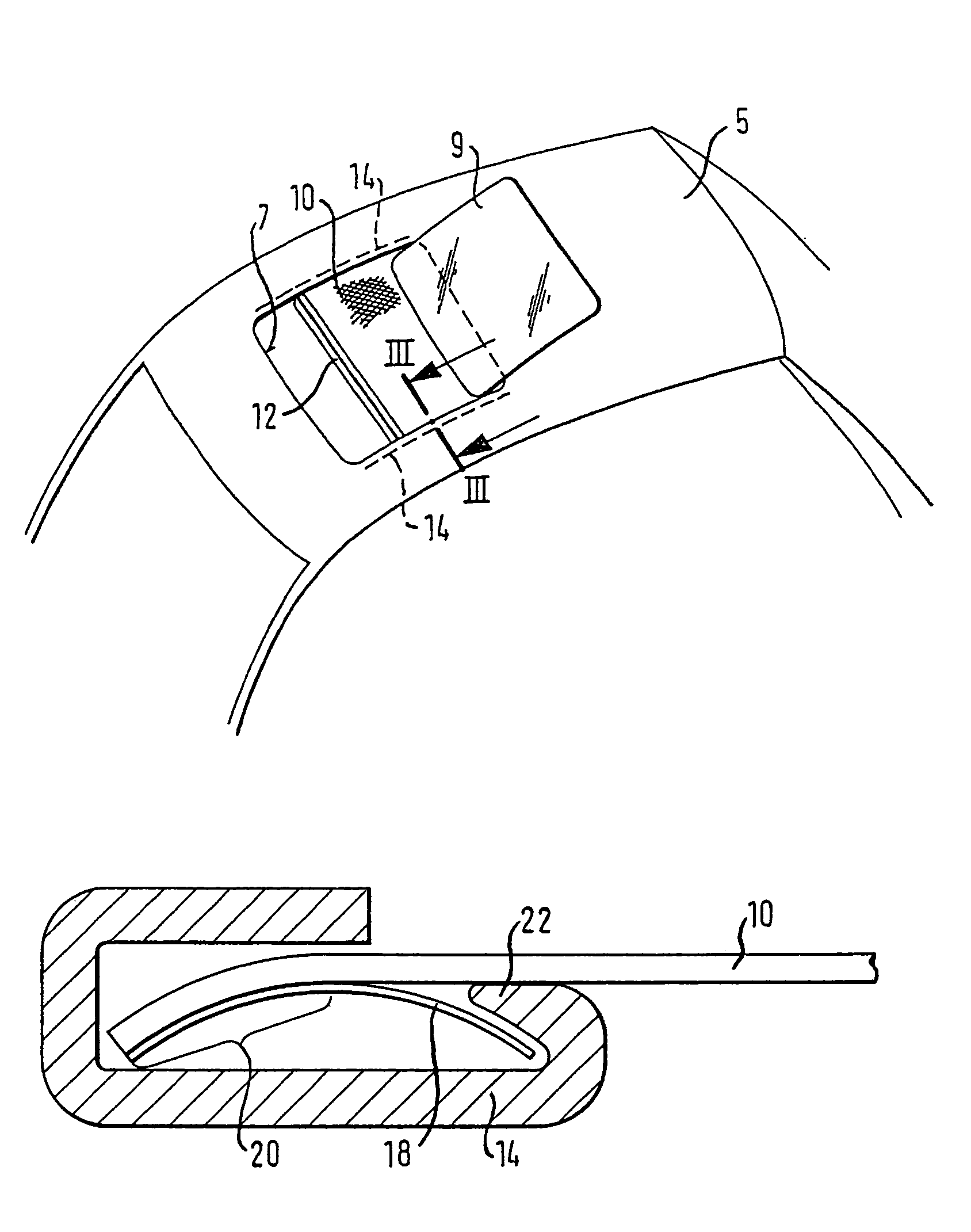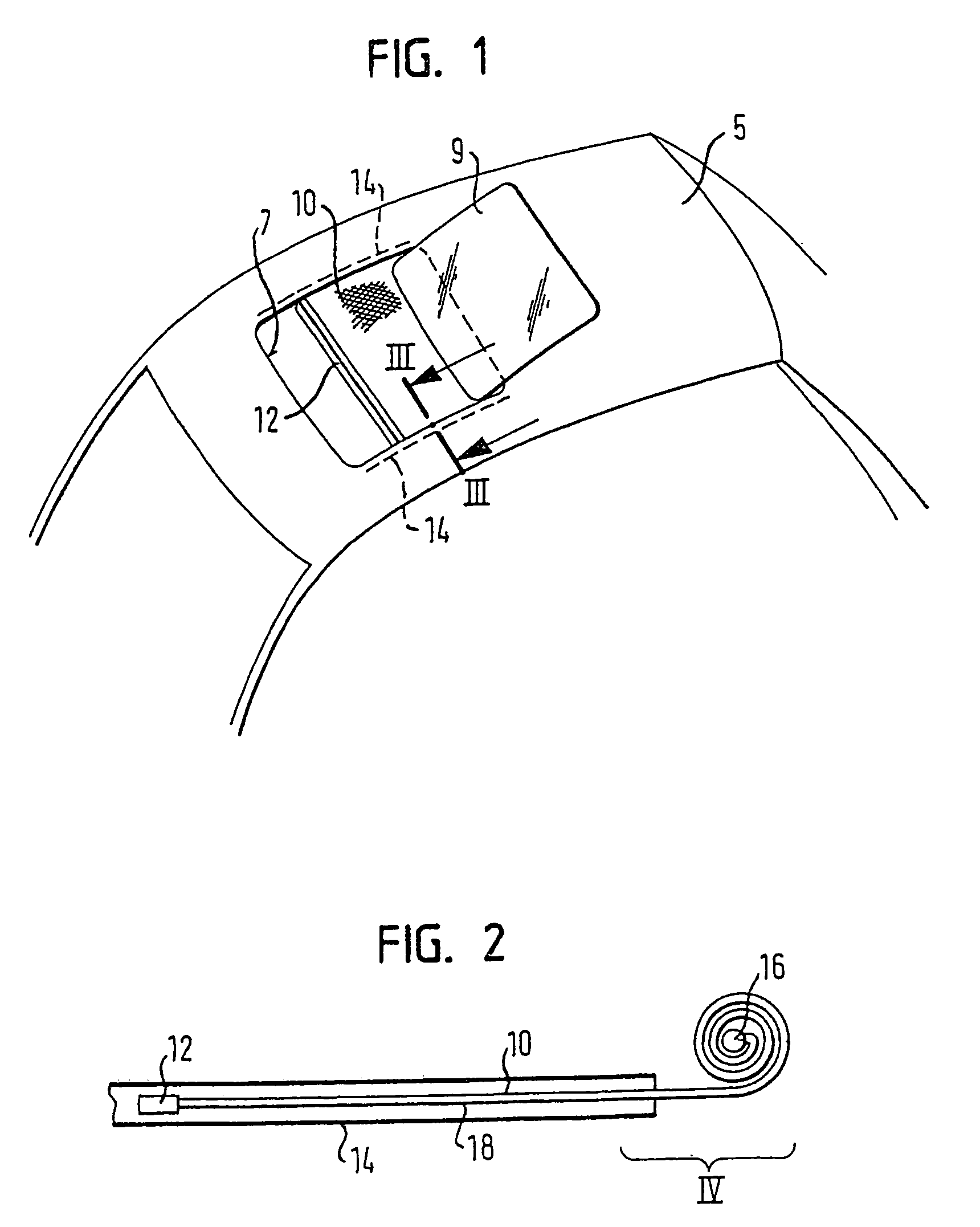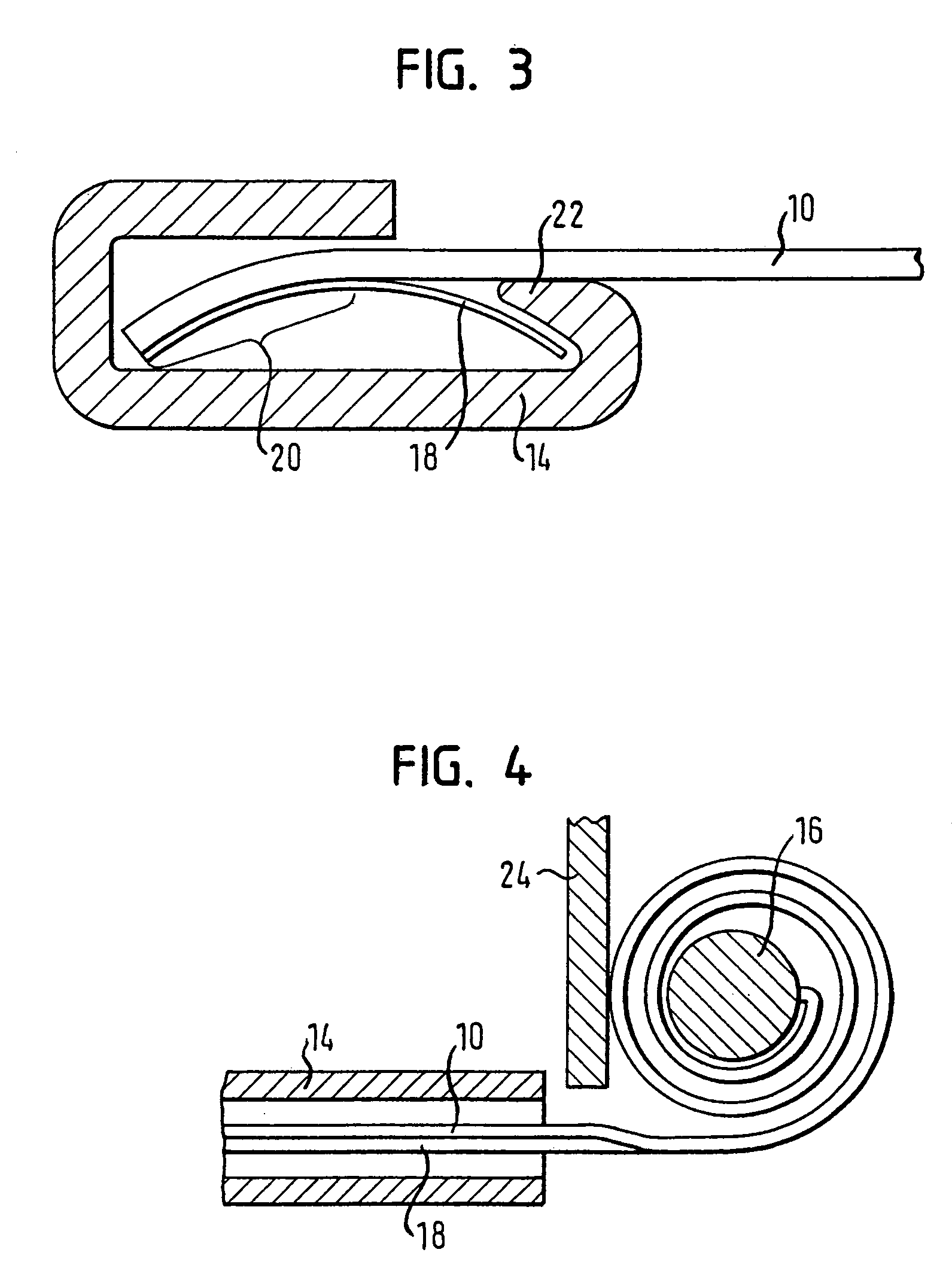Window blind for a sliding roof system
a technology for sliding roofs and blinds, applied in the direction of windows, windscreens, superstructures, etc., can solve the problems of springs developing a comparably high frictional force, and achieve the effect of high frictional for
- Summary
- Abstract
- Description
- Claims
- Application Information
AI Technical Summary
Benefits of technology
Problems solved by technology
Method used
Image
Examples
Embodiment Construction
[0015]Generally, a window blind according to the present invention includes a flexible material and two flat spiral springs that extend along the longitudinal edges of the window blind. The flat spiral springs tend to contract into a spiral and act directly on the window blind itself instead of on a winding shaft. This ensures that the portions of the window blind that are not located in the guide rails will automatically be rolled into a coil. Thus, a very low tensile force acts on the portions of the window blind located in the guide rails. Moreover, the pretensioning of the flat spiral springs causes the springs to develop a comparably high friction within the guide rails, reliably preventing the window blind from displacing on its own and eliminating the need to include a separate window blind brake to hold the window blind in a desired position.
[0016]The flat spiral springs also allows the window blind to occupy a smaller installation space because spring biasing the winding sh...
PUM
 Login to View More
Login to View More Abstract
Description
Claims
Application Information
 Login to View More
Login to View More - R&D
- Intellectual Property
- Life Sciences
- Materials
- Tech Scout
- Unparalleled Data Quality
- Higher Quality Content
- 60% Fewer Hallucinations
Browse by: Latest US Patents, China's latest patents, Technical Efficacy Thesaurus, Application Domain, Technology Topic, Popular Technical Reports.
© 2025 PatSnap. All rights reserved.Legal|Privacy policy|Modern Slavery Act Transparency Statement|Sitemap|About US| Contact US: help@patsnap.com



